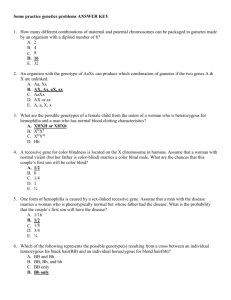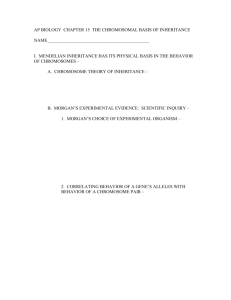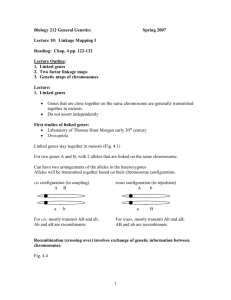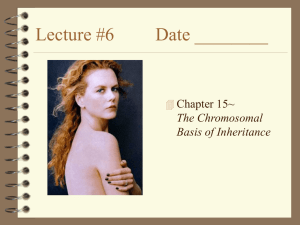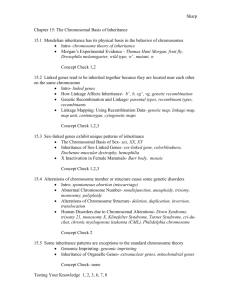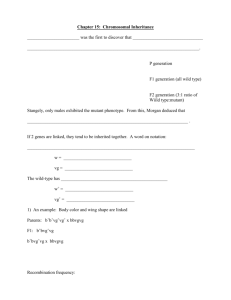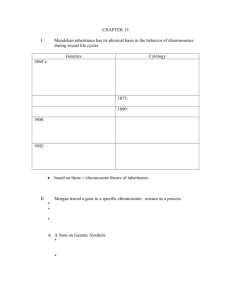I. History of Genes and Cells
advertisement
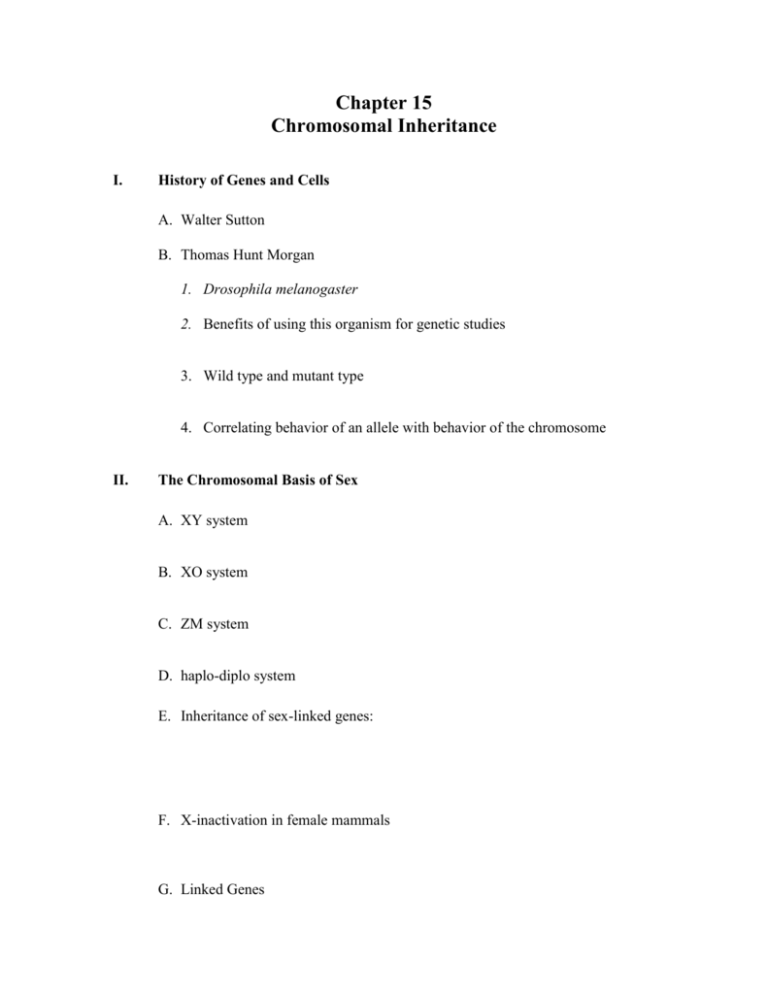
Chapter 15 Chromosomal Inheritance I. History of Genes and Cells A. Walter Sutton B. Thomas Hunt Morgan 1. Drosophila melanogaster 2. Benefits of using this organism for genetic studies 3. Wild type and mutant type 4. Correlating behavior of an allele with behavior of the chromosome II. The Chromosomal Basis of Sex A. XY system B. XO system C. ZM system D. haplo-diplo system E. Inheritance of sex-linked genes: F. X-inactivation in female mammals G. Linked Genes III. Chromosomal Recombination A. Genetic recombination B. Parental types C. Recombinants D. Crossing over 1. Define 2. Recombination frequency IV. Genetic Maps and Crossing Over Data A. Alfred Sturtevant and Genetic Maps B. Map units C. Linkage Maps D. How to figure out recombination frequencies: 1. 2. 3. Now you try: A wild-type fruit fly that is heterozygous for gray body color and normal wings b+ b vg+ vg, is mated with a black fly with vestigial wings b b vg vg. The offspring have the following phenotypic distribution: wild type: 778; black-vestigial, 785; black-normal, 158; gray-vestigial, 162. What is the recombination frequency between these genes for body color and wing size? 4. Now you try: Determine the sequence of genes along a chromosome based on the following recombination frequencies: A—B, 8 map units; A—C, 28 map units; A—D, 25 map units; B—C , 20 map units; B—D, 33 map units. V. Chromosomal Alterations A. Alterations in Chromosome Number 1. Nondisjunction- 2. Monosomic zygote 3. Trisomic zygote 4. Polyploidy B. Alterations of Chromosome Structure 1. Deletion 2. Duplication 3. Inversion 4. Translocation

